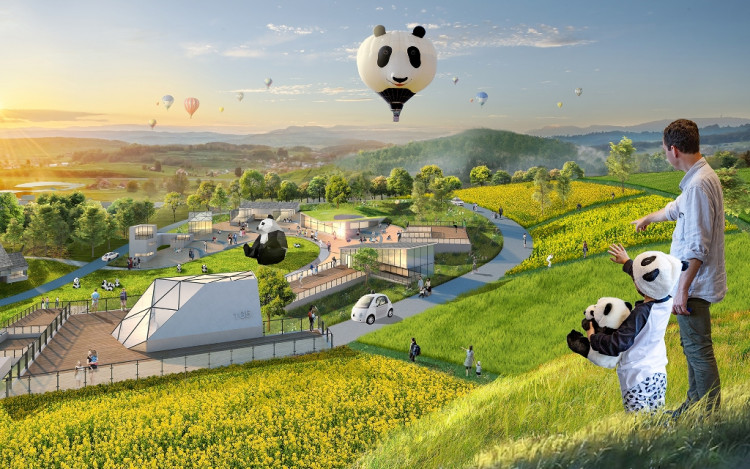Sasaki, a global design firm leading innovations in architecture, urban design, and landscape architecture, released representational images of its proposed design of the planned Chengdu Panda Reserves in China.
The park, which would extend from Gansu, Shaanxi, and Sichuan provinces, would measure 27,134 square kilometers. The area in Sichuan would take up 20,177 square kilometers, the one in Gansu would take up 2,571 square kilometers, and in Shaanxi 2,571 square kilometers.
The park is aimed at protecting the pandas which are a significant part of China's culture aside from being an important part of the world's whole ecosystem.
Sasaki won an international competition held by the Chinese government, giving it an amazing opportunity to build the park which could be the world's "Panda Capital."
On Oct. 31, Sasaki has released conceptual photos of its planned designed for the park. In the announcement, the firm noted that the upcoming park is expected to have more than 20 million visitors, a figure which is more than the annual visitors of Disneyland. Business Insider has also described it like 110 times more than the size of Disneyland.
Sasaki's plan includes three park sections all aimed at improving the quality of life of pandas and enhance their abilities to survive in the wild. There would be a space dedicated to a lakeside village, another space for a research center, and a third space which would have a link to public transit.
Visitors would have a more "immersive" experience at the "Beihu Panda Park" where they could see the pandas up close. People would be allowed to observe the animals' in their day-to-day lives, how they interact with other species, and how they explore their habitat. People would also be introduced to research and other environmental initiatives aimed at protecting the pandas.
The "Chengdu Panda Reserve" would be dedicated to researching breeding techniques and the pandas' assimilation into the wild. This section of the park would be located at foothills of the Tibetan plateau. This would also be where researchers would train pandas that are born in captivity to learn to live in the wild.
The third section, the Longquanshan Panda Village, is where visitors would be introduced to the culture that is authentic to Chengdu. Tourists would be introduced to the region's history, food, and wildlife.
In line with this initiative, Li Chunliang, vice administrator for the National Forestry and Grassland Administration of China, met with Catherine McKenna, Canada's minister of Environment and Climate Change who also oversees for Parks Canada on Oct. 31.
The two leaders announced an agreement between Canada's Jasper and Elk Island National Parks and China's Giant Panda National Park. The bilateral cooperation involved establishment, management, and promotion of protected areas between China and Canada. They pledged to share information on best practices related to national park system planning, policy and legislation, ecological monitoring, sustainable tourism, and responsible economic park development.






